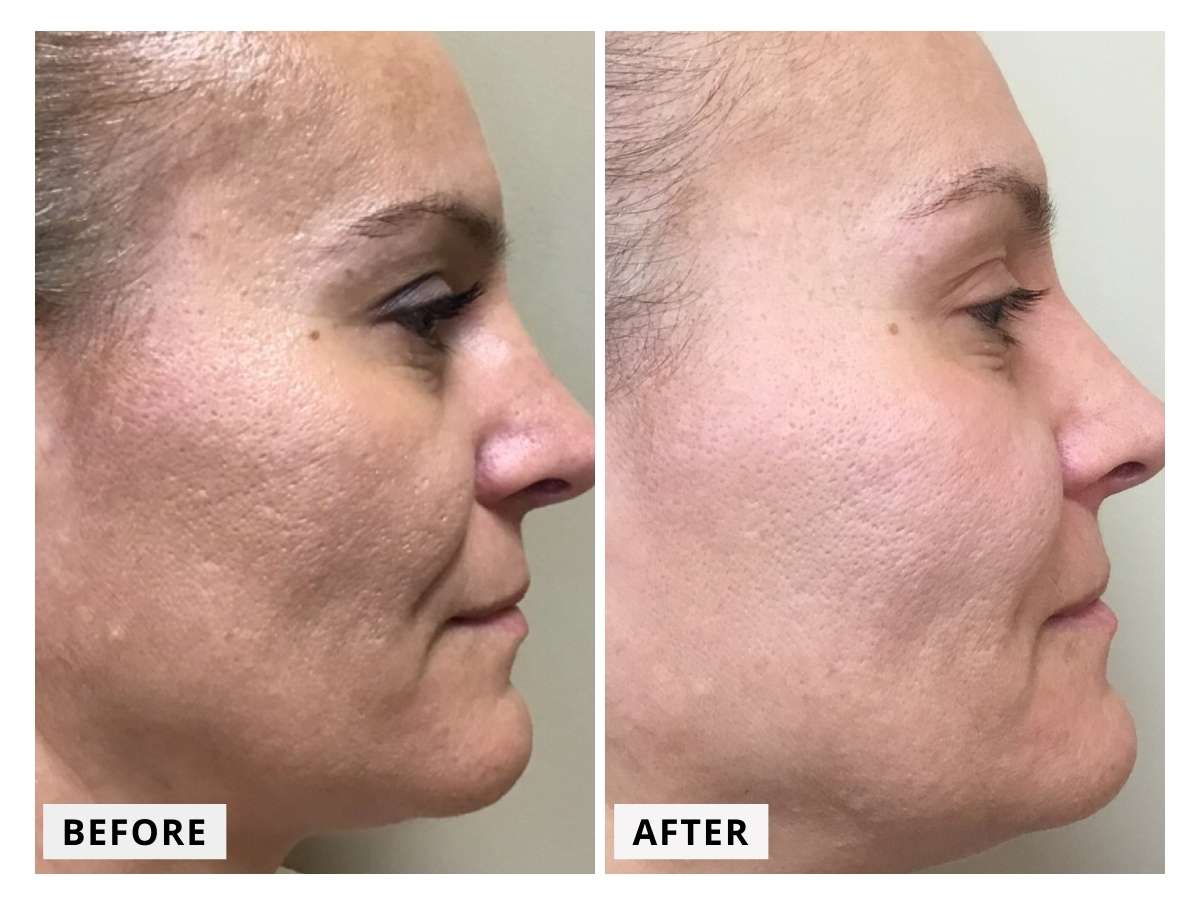
In the last twenty years, the “next hot thing” in anti-aging skin science has been just that: hot. From fractional lasers like Fraxel to radiofrequency like Titan and Thermage to Ultrasound like Ulthera, the reigning smoothing-and-tightening tools in medical spas relied on heat. The basic idea was the same: we created controlled wounds with heat, and used those small (let’s just go ahead and say it) burns to jump-start wound healing and, thus, collagen production in the skin. But there were (and always will be) problems with using heat to create our collagen stimulation. It flares up conditions like melasma and rosacea, and can traumatize and scar skin of color. Typically, the downtime is measured in days to weeks, and, not least, it hurts.
So that is where microoneedling comes in. It started with a simple idea: “Is there a way we can make our small, controlled wounds without using heat?” And, as it turns out, the answer is yes! Microneedling—a technique that uses a needle-studded pen to create tiny holes into the skin (potentially down to the dermis) – can create the same stimulation of the skin that lasers do without using heat. Goodbye pain! Goodbye peeling, oozing, and crusting! Hello to a single weekend of downtime!
Microneedling may sound like an intimidating procedure, no thanks to the word “needle” in its name, but with a numbing cream, it is completely painless. Even better – because microneedling creates thousands of small channels directly into the dermis – it enhances the penetration of whichever hydrating, brightening, or rejuvenating actives are applied post-procedure. Done regularly, microneedling will make your skin thicker, tighter and stronger, with fewer lines, with a beautiful, healthy glow.
WHO SHOULD DO IT?
Simply put – if you are aging you are a great candidate. Personally, I do one about every 3-4 months. Whenever the tiny lines in my upper lip come back, I know that I am due! Since microneedling doesn’t use heat and is totally mechanical, it’s safe for all skin colors and types. Just make sure there aren’t any inflamed or infected areas on your skin, and if you have a cystic acne breakout, wait until it clears up before coming in for your appointment.
DOES IT HURT?
We use numbing cream so, no, the procedure does not hurt. Afterwards you can expect the skin to be a little pink, and at the very worst, a few tiny pint-point bruises that fade in a few days.
WHICH AREAS ON THE BODY CAN BE TREATED?
Microneedling isn’t exclusive to just the face area. The treatment can be done anywhere the skin on the body needs to be thickened, tightened or repaired. The most common problem areas for most patients is the neck and decollate, but it can also be done on stretch marks or scars anywhere on the body.
HOW OFTEN CAN I GET IT DONE?
Depends on the severity of the issue. If your skin is generally healthy and you do regular medical grade skin care, a few sessions a year will be enough to hold most aging at bay. Someone with more advanced aging, or acne scarring should plan to do one session per month for 4 to 6 months, with a few sessions a year for maintenance after that. Personally, I get a treatment whenever I see the lines in my upper lip coming back – usually once a quarter.
WHAT SHOULD I DO AFTERWARDS?
Ideally, you’ll want to avoid putting on makeup for the rest of the day. We advise people not to use retinol or anything too active for a few days, and we send them home with a gentle cleanser, moisturizer and sunscreen to use for a few days while their skin recovers.
Want to learn more about Microneedling? Click the link below!


